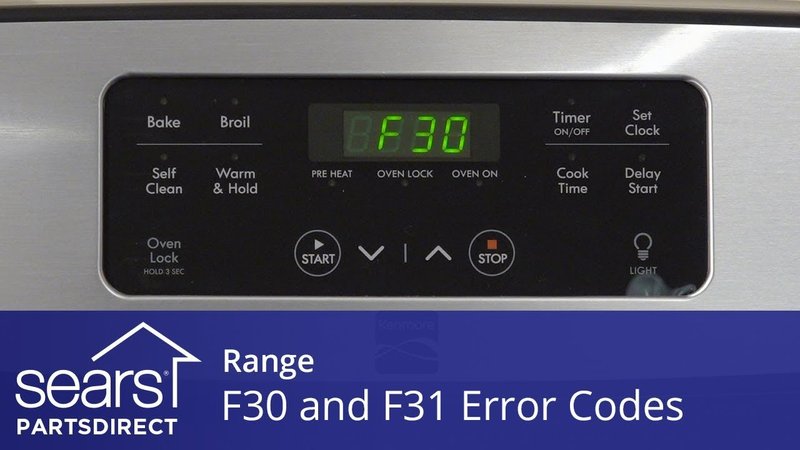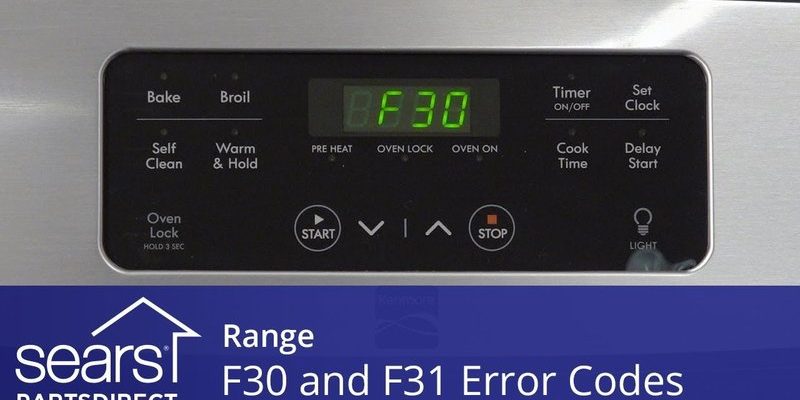
Let’s decode what the “Le” error means for your Frigidaire oven or range. The “Le” code typically points to a problem with the oven’s door lock mechanism. Think of it like a security system; just as your front door must be securely closed and locked, your oven’s door must also be locked during certain operations, such as the self-cleaning cycle. If there’s an issue with the locking mechanism, your oven is simply letting you know that it needs some attention before it can proceed safely.
Understanding the “Le” Error Code
So, what’s going on with the “Le” error code? When you see this code, it means your oven’s door isn’t locking or unlocking properly. This can happen for a number of reasons, just like a door that sticks or a lock that jams over time. The locking mechanism is a built-in safety feature, ensuring the oven door is secure during processes that involve high temperatures, like self-cleaning. If the door doesn’t lock correctly, the oven can’t proceed with these tasks, which is why it throws the “Le” code on its display.
Here’s the deal: the issue could be as simple as a jam caused by crumbs or debris caught in the door latch, much like a tiny pebble jamming a zipper. It could also be a problem with the electronic control board that’s not signaling the lock properly. Either way, your oven needs a little help to ensure everything’s functioning as intended. But don’t worry, this is something you can usually troubleshoot and resolve on your own.
You might be wondering why this little lock is such a big deal. Well, imagine trying to clean your oven with the door open—it’s not just impractical, it’s downright unsafe! The locking mechanism makes sure the door stays tightly closed, protecting you and your kitchen from heat or cleaning fumes.
Common Causes of the “Le” Error Code
Now, let’s explore why this error code might pop up. One common cause is simple wear and tear. Over time, the constant opening and closing of the oven door can lead to parts of the locking mechanism becoming loose or misaligned, similar to how a well-loved book can eventually fray at the edges. Another potential culprit could be power surges or outages, which can sometimes scramble the electronic brains of our home appliances, leading to temporary glitches.
Sometimes, the error might be triggered by a miscommunication within the appliance’s electronic system. Think of it like a game of telephone gone wrong—what starts as a clear instruction can become muddled somewhere along the line. Dust or grease buildup can also be a sneaky villain, impeding the lock from moving smoothly, much like how rust can freeze up a bike chain.
Whatever the cause, each of these issues can usually be addressed with a bit of patience and some simple troubleshooting steps. The key here is not to panic—your oven’s trying to tell you something, and with a little attention, you’ll likely have it back up and running smoothly.
Troubleshooting the “Le” Error Code
So, how do you tackle this error? Start by inspecting the oven door and the area around the lock. Look for any obvious obstructions like crumbs or small pieces of debris, just as you’d clear a messy countertop before cooking. Clean the area gently with a soft cloth. If you’re comfortable, you might want to check that the door latch isn’t bent or damaged.
Next, try resetting your oven. Just like rebooting a computer, sometimes all it needs is a fresh start. Turn off the oven, unplug it from the power source, wait a few minutes, then plug it back in. This can often resolve minor electronic glitches.
If the problem persists, it might be time to consult your oven’s manual or reach out to Frigidaire’s customer service for guidance. In cases where technical expertise is needed, a professional technician can diagnose more complex issues. Remember, safety first—if you’re unsure, don’t hesitate to call in the pros.
Preventing Future Issues
Preventing future occurrences of the “Le” error is all about maintenance. Think of it like the regular upkeep you do on your car—it’s essential to keep things running smoothly. Regularly clean your oven, focusing on removing food particles and grease that might interfere with the door’s locking mechanism. Ensure that the door always closes evenly and smoothly; if it starts sticking, address it promptly.
Consider scheduling regular checks of your appliance’s electronic systems. Just like checking your smoke detector batteries, these small actions can prevent bigger issues down the road. Keep the surrounding area clean and dry, reducing the risk of dust or moisture affecting the lock.
By understanding what your oven is communicating through these codes and taking proactive steps in maintenance, you’ll not only extend the life of your appliance but also ensure it functions safely and efficiently. Cooking in a well-maintained kitchen is like driving a well-oiled machine—it just feels right, doesn’t it?
And there you have it. Next time your Frigidaire oven flashes an “Le” error, you’ll know exactly what to do, transforming a worrisome moment into a simple fix, just like magic.
